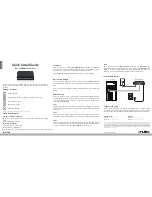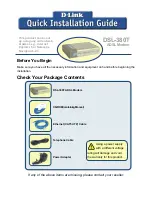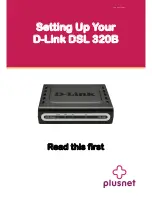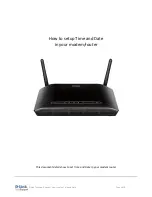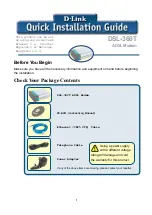
BB005x Installation and Configuration Guide
Chapter 4: Basic Configurations
RFC 1483 (MPoA) Bridging and RFC 2516 (PPPoE) Routing are the most popular
ADSL configuration modes. The following is a step-by-step set of instructions of
how to configure the BB005x modem/router for operation in these two modes.
At the end of the chapter, diagrams illustrating the basic architecture of a few
other ADSL configuration modes are provided. For more detailed information
on how to configure the BB005x for operation on those modes please inquire
with your ISP and/or consult the CLI manual on the CD-ROM.
Configuring the BB005x in RFC 1483 (MPoA) Bridging
This is BB005x factory default mode. For configuration of the unit in RFC 1483
(MPoA) Bridging mode, your ISP needs to provide you with the following
information:
•
VPI and VCI numbers for connection across the ATM network. The
factory default values are VPI=0, VCI=35
•
ATM encapsulation type: LLC/SNAP or VcMux. The factory default value
is LLC/SNAP.
RFC 1483 Bridging mode using the factory default settings
If your configuration uses the factory default settings: RFC 1483 Bridging,
VPI/VCI = 0/35, LLC/SNAP encapsulation - please go through the following
steps to complete the configuration and installation process.
1. Connect the RJ-11 phone cable to your modem.
2. Connect the RJ-45 Ethernet cable between your computer and the
BB005x. Remove the serial cable if it is connected.
3. Connect the AC Power adapter and turn on the BB005x.
4. Close all programs.
5. Proceed to confirm or change, if necessary, the settings of the network
card on your computer by following the procedures described in the
Changing the settings of your computer section: Procedure B for
Windows 95/98/ME or Procedure D for Windows 2000/XP.
You are now ready to connect to the Internet using the PPPoE software
(Enternet 300 or RASP PPPoE) provided by your ISP or by connecting the
BB005x to a firewall/gateway/router device.
21































